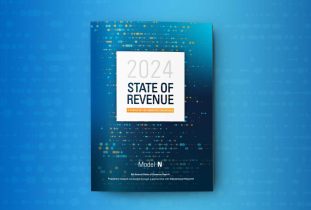By Erica Bartlett, Product Manager, Model N
In the U.S., 4.21 billion prescriptions were dispensed in 2018, and that number is expected to grow over the next few years. While the growth is welcome news to manufacturers, tracking the rebates and chargebacks associated with this volume has grown into a formidable task. Keeping track of this amount of information is challenging for all sides, and it’s very easy for mistakes to creep in when all those charge lines are summarized and submitted to pharmaceutical manufacturers for rebates. These mistakes can get expensive, at times adding up to tens of millions of dollars.
Developing an automated workflow that allows pricing and rebate analysts to monitor, investigate and correct suspect claim lines in a timely and efficient manner can both help reduce revenue leakage from incorrect pricing, and keep funds flowing to make sure the supply chain is operating as efficiently as possible. Key areas that need to be addressed with validation workflows include duplicate charge lines, debit-credit scenarios, and validating benefits for dual-eligibles.
Duplicate Checks
One key problem area comes with duplicate prescriptions, which are often included in the summarized data. When one large pharmaceutical manufacturer reviewed their Medicaid claim level data (CLD) for California, they found the duplicate rate was 5% of the total invoice amount. This means that if you aren’t analyzing the script-level information, you end up with significant revenue leakage by double-paying some rebates.
Identifying these duplicates is far from straightforward, though. Duplicates might be found within the file, across files, and across market segments. Making this even more complicated are situations where a prescription is submitted, backed out due to an error, and then resubmitted. Duplicates can also come through at different times, long after you’ve paid the first item. This complexity, and the volume of prescriptions dispensed every day, makes it impossible to manually review this information in an effective way.
Having an automated tool like Model N Validata is essential to identify any duplicates or other errors with the detail level information, to ensure that you’re only paying the correct amount. Each business may have unique requirements for duplicate checking. Validata supports this with flexibility in how duplicates are defined, and with different types of duplicate checks. When used effectively, these checks result in substantial savings, for both Medicaid and commercial prescription data. For example, using Validata, one manufacturer saved tens of millions of dollars for their Medicaid CLD alone.
Duplicates Within Files
The first and easiest scenario to check is for duplicates within the file itself. Even with this check, you have some flexibility in how to approach it. You first need to determine what should qualify as a duplicate. Each row in the script-level file has over fifty records, but you likely don’t need to check each field. Instead, choose the ones that your business considers most critical for a match.
Some common elements you might compare are:
- Product identifier
- Date the prescription was filled
- Pharmacy that filled the prescription
- Prescription reference number
You could also consider if you want to check for an exact match on the fill date, or if you want to look over a range of a few days to see if a duplicate came in that matched the other criteria. Looking within the file will find some of the duplicates, but you should do more advanced checks as well.
Duplicates Across Files
Not all duplicates come at the same time, or from the same submitter, which is why you should also use Validata to look at other files for duplicates.
You still need to define your duplicate criteria, including a possible range of dates and which submitters to consider. Based on your selection, Validata will look across the history of your script-level information to find any matches.
Debit-Credit Scenarios
Another situation to look for is one where a prescription was filled incorrectly, backed out, and then re-issued. Although the submitted amounts in these cases should cancel each other out, identifying them up-front gives you better visibility to the data.
Additionally, as with duplicates, these debit-credit situations don’t always occur within the same file, and they might not be submitted at the same time. With Validata, you can look both within a file and across files, the same as with a duplicate check.
Another possibility is that instead of a single correction, the same prescription might go through multiple times, with different amounts that all net out to zero. You can flag all these items so you’re not including the debit-credit items on future validations or payments.
Coordination of Benefits
Finally, you could also have situations where someone who receives a prescription has more than one type of insurance coverage. For example, they could be dual-eligible for both Medicare and Medicaid.
In these cases, you could receive invoices from two or more submitters, but you should only pay on one.
Validata supports this with a validation called Coordination of Benefits. You can define the market segments that you work with, and which one should be paid if you receive a rebate request from more than one segment for the same prescription.
Once you’ve defined this, and identified your other parameters for a prescription match, the system will look for these duplicates across market segments. If you’ve already paid on one, and it wasn’t the right one, Validata will automatically reverse the incorrect payment, ensuring that you pay a single rebate.
Use Validata to Prevent Revenue Leakage
No one wants to pay for something twice, and for pharmaceutical manufacturers, paying rebates on duplicate prescriptions can easily add up to millions of dollars. A tool like Validata automates this process, and you can make the most of it by configuring the validations to meet your specific business needs. Once you do, you’ll save both time and money. For more information, please visit our website or email sales@modeln.com and we’ll be in touch!
















